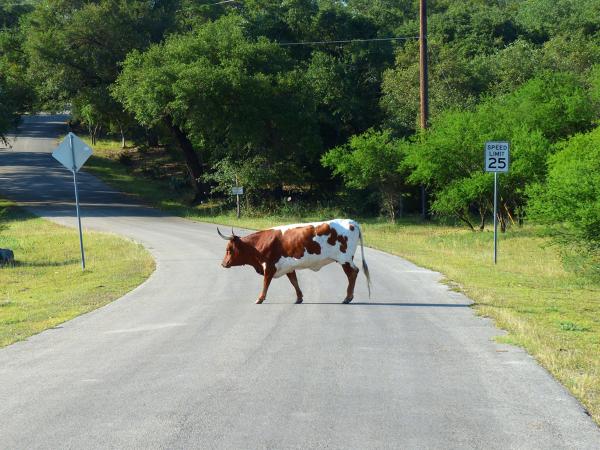How can the City regulate the ETJ?

This information is offered in the lobby of City Hall on a handout:
“Dripping Springs Open House 2015, City Limits v. ETJ”
Back in the olden days of not so long ago, folks were not typically subject to zoning regulations in the rural Texas hill country. An emu farm could locate next to a neighbor’s machine shop or elegant residence. Nowadays it is much more complicated, because as towns and cities swell in population, rural areas are turning into “Texas Hill Country Homes with Acreage,” ushering new laws and regulations into areas designated as “Extraterritorial Jurisdictions (ETJ).”
Disputes over these new development regulations, and which governmental entity (state, city, county) has authority over what, may cause confusion, or even heartbreak between neighbors. The current Driftwood controversy involving the Mark Black Wedding Venue, and its processes, is the latest example of this.
So let’s look at the extent of power The City Of Dripping Springs has in regulating its ETJ:
What is an ETJ?
“Extraterritorial Jurisdictions” (ETJ) are areas surrounding a city’s boundaries subject to certain regulations. The distance extending from the city limits is determined by the city’s population. An ETJ will expand with population growth. Or by ordinance, a city may also annex additional outlying land contiguous to its ETJ by request of landowners.
How did Driftwood become a Dripping Springs ETJ?
The Dripping Springs ETJ covers a good deal of NW Hays County, due to annexation and petitions from landowners. In the 1980’s Austin wanted to expand its boundaries close to Dripping Springs. The two cities made an agreement to allow interested landowners to be included in the Dripping Springs ETJ, rather than Austin’s ETJ. Driftwood chose Dripping.
Dripping Springs is a “Type A General Law City.”
This means it must look to state statutes as sources of regulatory authority - adopting ordinances, acts, laws, regulations consistent with state law (unlike Home-Rule municipalities which have full power of local government). There is limited authority to regulate development in its ETJ. “The Texas Local Government Code” authorizes the City to enforce the following regulations in its ETJ:
1). Regulate subdivisions and plats subject to state Code limitations;
2). Regulate signs;
3). Enter into development agreement contracts with landowners addressing a wide variety of issues, such as land planning, construction standards, environmental standards, lighting, landscaping and water quality standards.
4). Regulate site development and construction.
5.) Adopt ordinances that promote water protection, prevent water pollution, and abate nuisances.
Property owners in the Dripping Springs ETJ are not subject to its ad valorem taxes.
Dripping Springs ETJ residents are represented through city commissions.
Five out of seven members of the City’s Planning and Zoning Commission reside in the ETJ. The P&Z Commission plays a very important role by recommending approvals or denials to the DS City Council on their regulatory agenda items at City Hall public hearings. It’s good to attend these P&Z meetings, and speak your peace at the public hearing podium before it goes on to the City Council.
The City of Dripping Springs Code of Ordinances
This “Code” is a compilation of rules and regulations, enacted by the City Council within the city limits and in the ETJ. It includes various standards, procedures, requirements and prohibitions.
Additional Information
More information on City Code of Ordinances can be found by clicking under “Ordinances” on the City’s official website: cityofdrippingsprings.com . The “site contains provisions of the Code of Ordinances for the City of Dripping Springs, Texas (the "Code"), which is a compilation of the rules and regulations enacted by the City Council. It is a collection of the laws governing numerous acts or omissions within the city limits and extraterritorial jurisdiction, including various standards, procedures, requirements and prohibitions.”
While the site is updated quarterly, the site does give a disclaimer—“the City of Dripping Springs cannot assure the accuracy of any specific provision originating from this site. Therefore, readers are urged to consult the official printed version of the Code (which is on display at City Hall) and the official ordinances enacted by the City Council amending the Code of Ordinances. The City also encourages readers of the Code to contact the legal counsel of their choice. This site cannot be legally cited as an official or authoritative source.”



